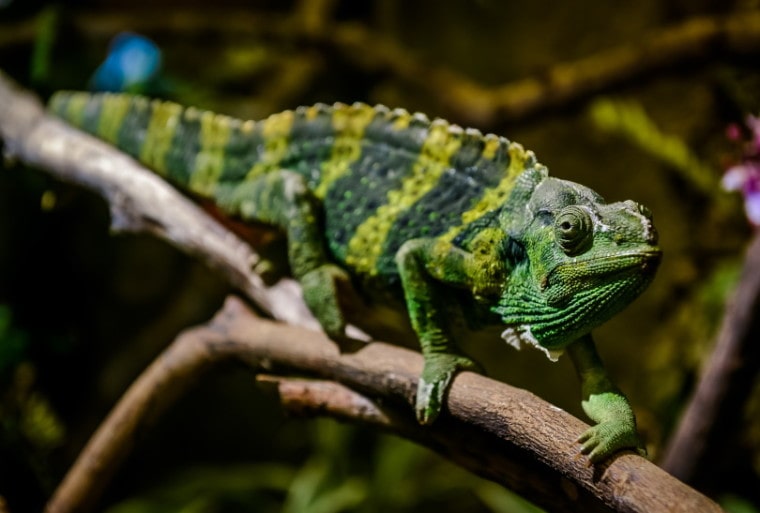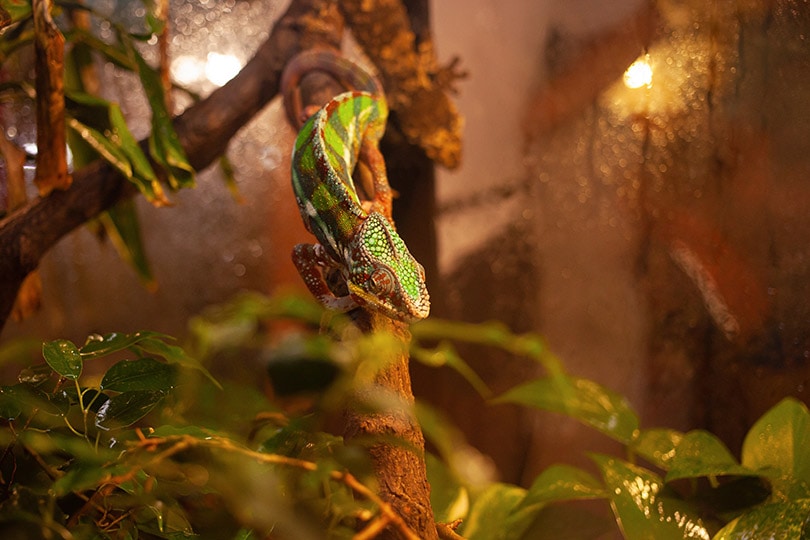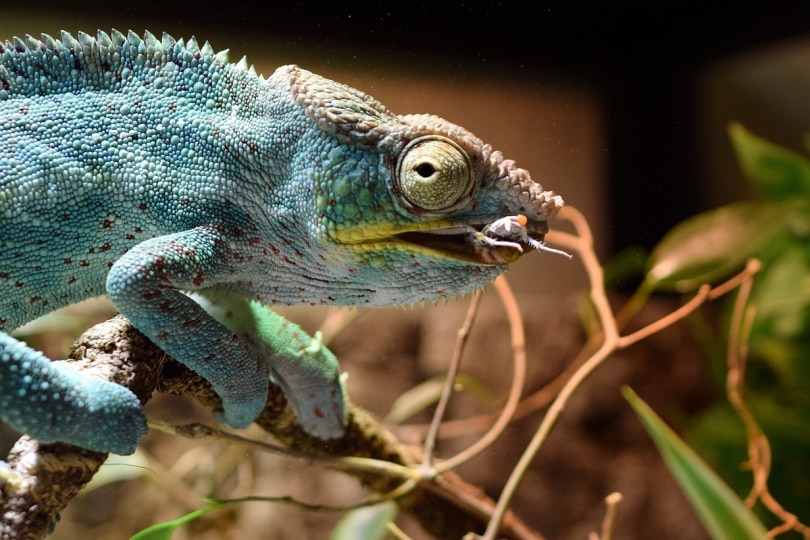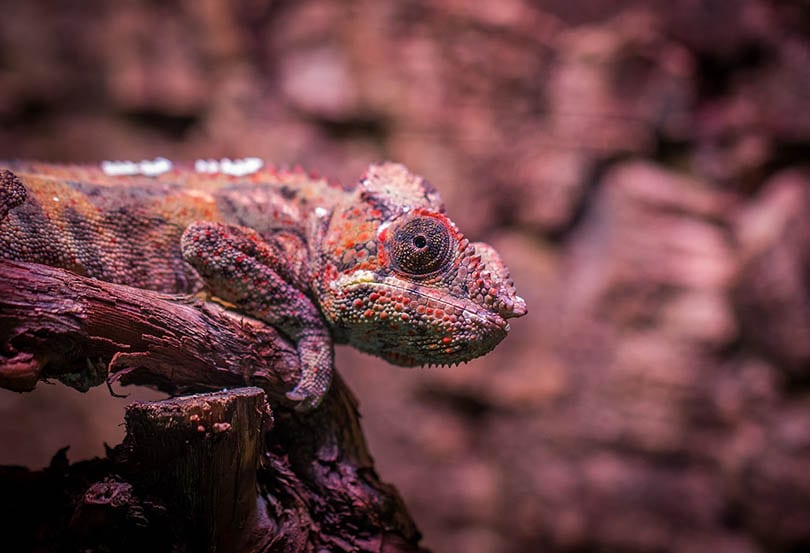
Reptile enthusiasts are often wowed by the tranquil beauty of chameleons. As a result, these intriguing animals are widely sold as pets, but sadly, many see their lives cut short due to the lack of knowledge and care from well-meaning owners. Indeed, according to some experts, the chameleon is arguably one of the least suitable reptiles for most pet owners.
Many first-time buyers do not know how to recognize the signs of stress or illness in their pets, and many people do not consider that these reptiles are particularly sensitive. In addition, the chameleon often costs less than the veterinary costs itself.
Let’s dig into just how difficult it is to care for one of these unique creatures and what’s required from you as a pet owner.
The 3 Reasons Chameleons Are Difficult to Keep in Captivity
Chameleons are fragile and sensitive reptiles. Poor captive conditions and improper nutrition are the main causes of serious health problems in these cold-blooded animals:
1. The Chameleon Needs a Specific Living Space

The vivarium is essential for the well-being of your reptile. A typical setup should be at least 3’ x 3’ x 4’. Ideally, the vivarium should be placed on a table rather than on the floor; this will help your chameleon to have a privileged and higher point of view, which will be closer to its natural living environment.
In addition, it will be necessary to accessorize the vivarium by following the advice of experts. For example, it must be equipped with a UV lamp, a mister, and a reptile mat or paper on the ground. You can also add a large piece of bark and reproduce as much as possible the natural habitat of your chameleon with, for example, hiding places or relief elements to allow him to climb.
These additional supplies add to the already high cost of the vivarium, another essential factor to consider if you are looking to adopt a chameleon.
2. The Chameleon Has Special Nutritional Needs

The chameleon is carnivorous. It must hunt its prey and move a lot, making it unfit for life in a tight space. In addition, it is very easily subjected to stress and needs branches and flying, hopping, or crawling insects to hunt them. This means you will need to have a supply of crickets, mealworms, or wax worms. Plus, you’ll need to sprinkle the bugs with supplements to ensure your chameleon gets all the nutrients it needs to stay healthy.
Another consideration is how to give them water. It must, as in the wild, drink drops of water that trickle from the leaves. So, you can’t just put a bowl of water at the bottom of its vivarium, hoping your reptile will go and quench its thirst. Instead, you will need to mist its environment regularly or buy an automatic water mister.
3. The Chameleon Does Not Like to Be Handled

Chameleons are solitary, silent creatures that require very little attention from their human parent. So, unlike most other pets, these eye-catching pet reptiles are best kept for viewing, not handling. In addition, it causes a lot of stress in the chameleon, and stress is one of the major causes of its health problems.
In addition, it is not always easy to detect signs of distress or anxiety in this reptile. Nonetheless, the change in the color of his skin is often a reflection of his emotions, indicating that the animal is in pain, fear, or anger.
Bottom Line
The needs and care of a chameleon are more specific than many other pets, including other reptiles. Besides, despite all your good care, a chameleon has a relatively short life expectancy and rarely exceeds five to eight years. Finally, the conditions in which they are sold are often appalling, which further affects their quality of life. Therefore, bringing one into your home should be carefully considered.
See also:
Featured Image Credit: Alex Tihonovs, Shutterstock









